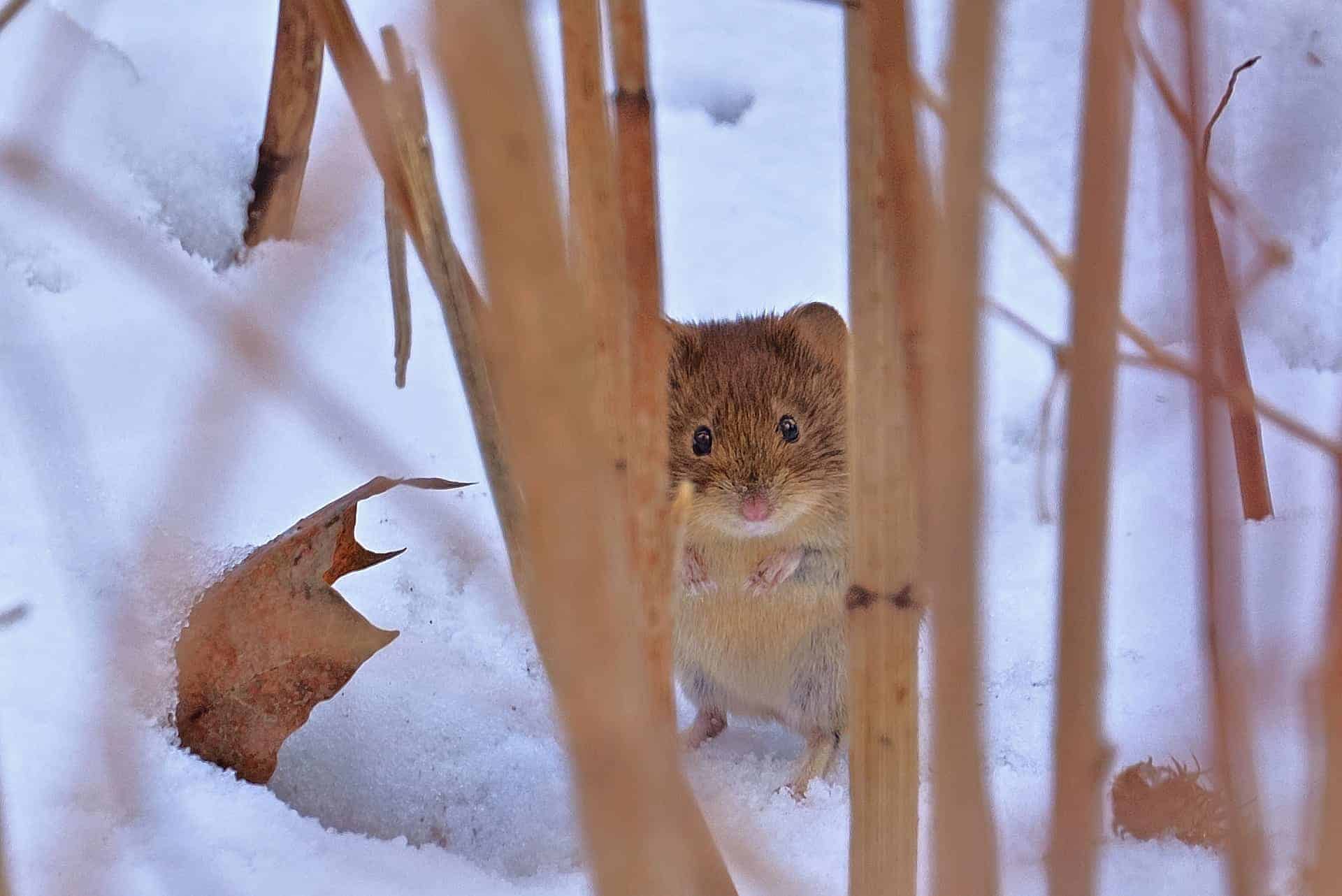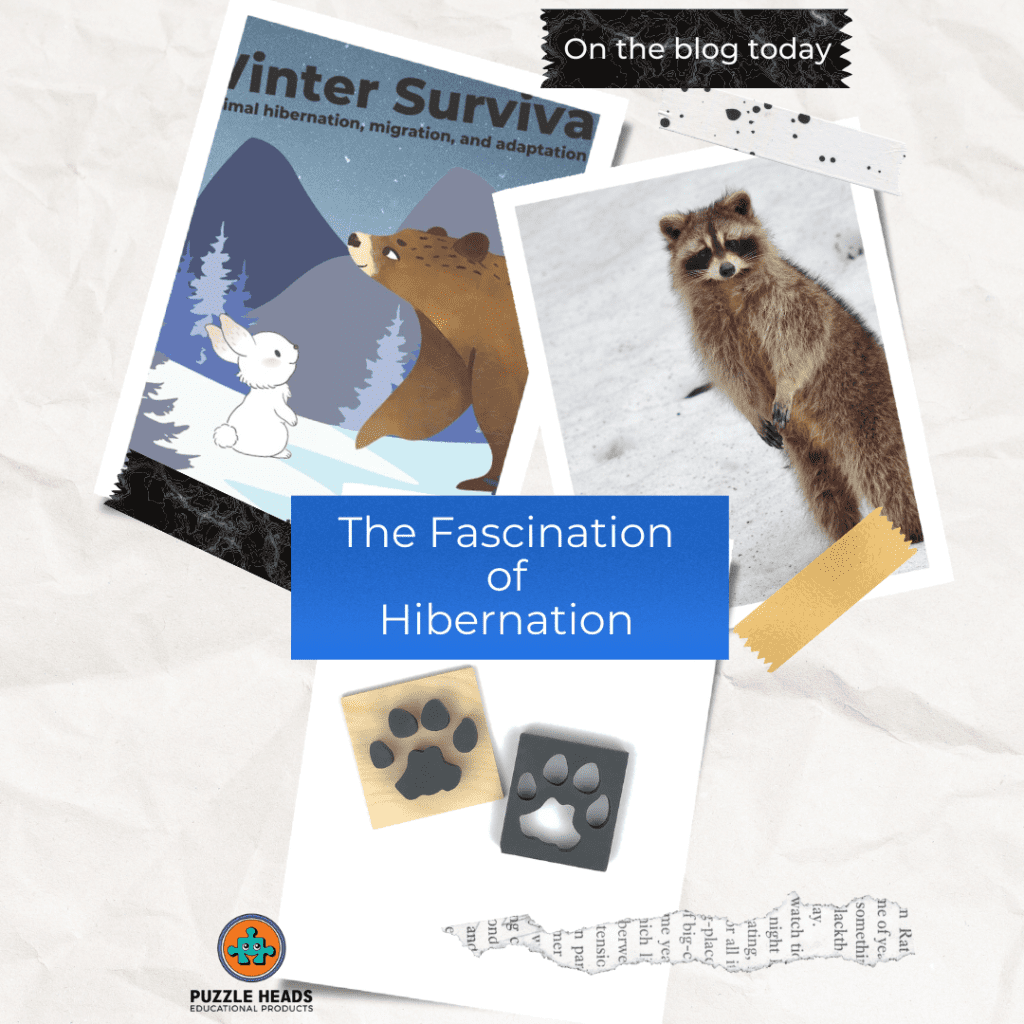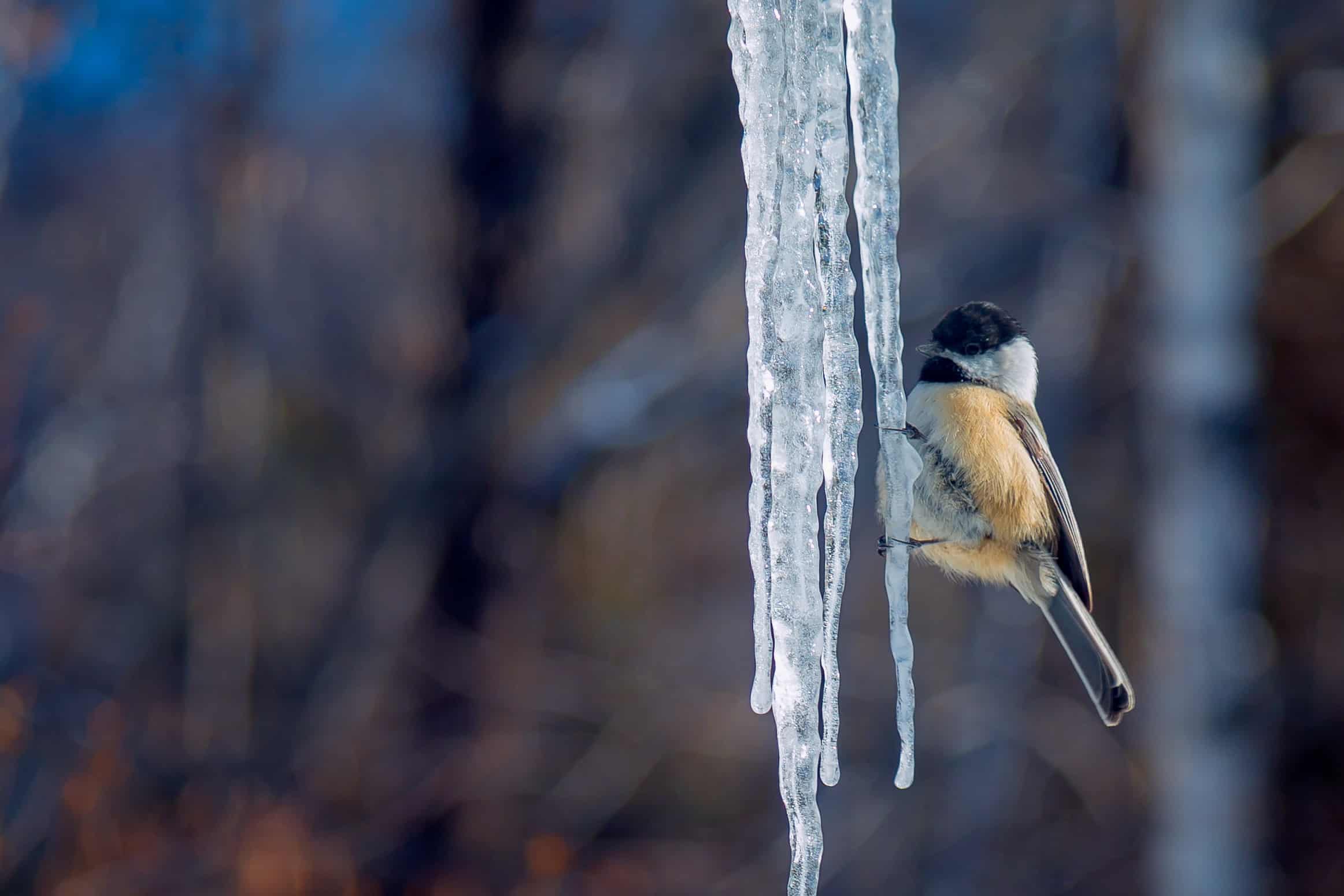What do animal tracks in the snow tell us about animal activity during the winter? Some animals hibernate, and some don’t. Depending on the animal, hibernation can last a few days or a few months. Read on to learn many more unusual facts about the fascination of hibernation.
Make sure you read our other blog post with 5 Fun Hibernation Study Activities! And no activities are truly fun unless you have some freebies to go with it! Don’t forget to download the FREE Hibernation Study Sorting Cards.
So what is hibernation?
Hibernation is typically when animals have periods of deep sleep during the winter or during extreme conditions. I know I love to sleep in on the weekends, but how can animals stay asleep for so long? There are a few ways their bodies adapt to allow for hibernation:
- Slowing down their metabolism, or the rate the body burns calories, to save energy
- Slowing down their breathing and heart rate to save energy
- Lowering their body temperature
What kinds of animals hibernate?
Animals that hibernate are ones that need to conserve energy in harsh environmental conditions, or when food is scarce. How animals hibernate and how long they hibernate depends on the species and their habitat.
3 Types of Hibernation
Did you know there are 3 types of hibernation?? I didn’t!
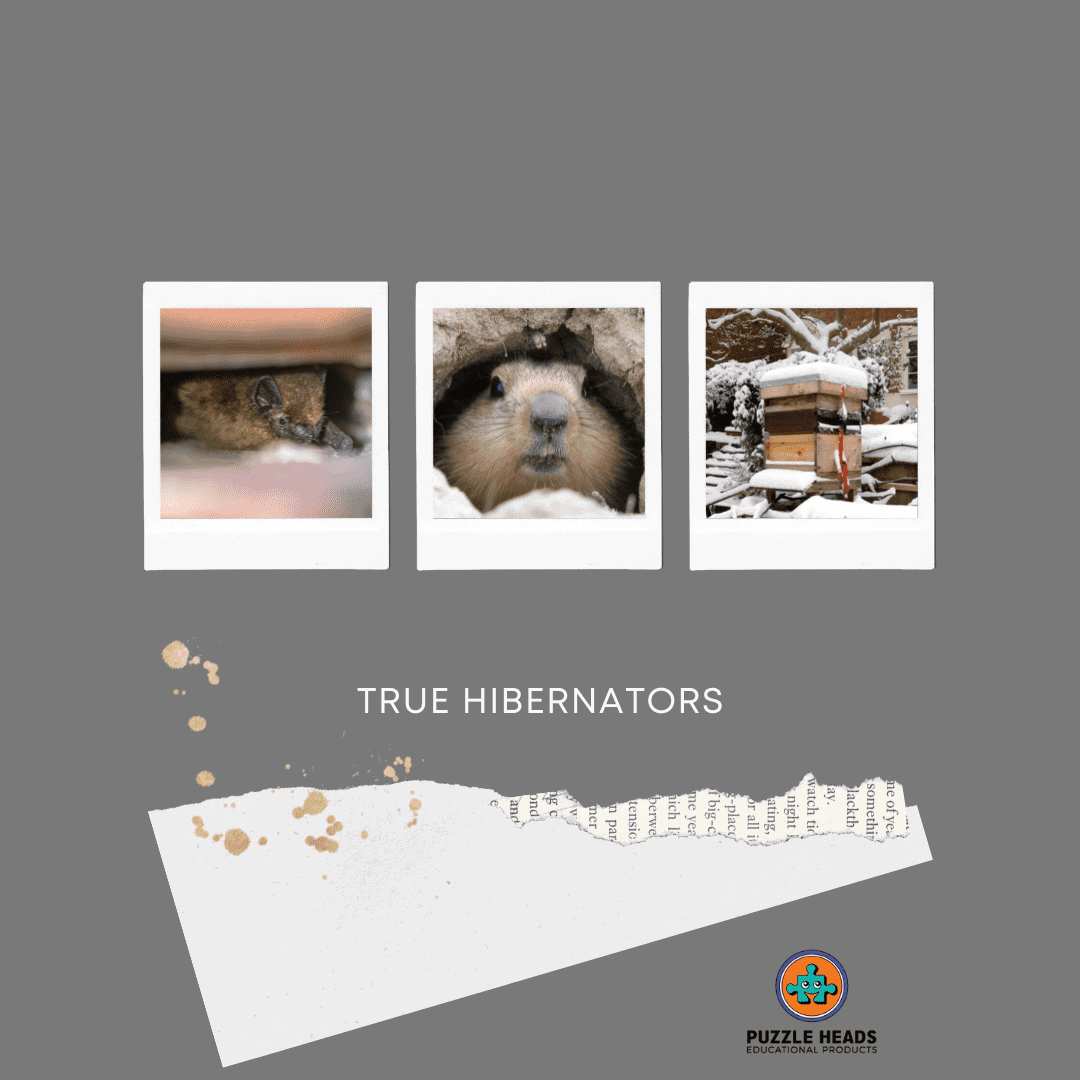
1. True hibernation
During true hibernation, animals will not wake up if there is a loud noise or if they are moved or touched. In this reduced state of activity, animals conserve energy during the long, cold winter months when there is little food available.
Characteristics of True Hibernation include:
- very low body temperature
- very slow breathing
- very low heart rate
- very low metabolic rate
Animals that are true hibernators include:
- Rodents like chipmunks, deer mice, shrews, woodchucks and ground squirrels
- Bumblebees, snakes and some bats
- Many insects
Fun Fact: Groundhogs (Woodchucks) are one of Canada’s largest true hibernators, going into a deep, comatose sleep. They survive on accumulated body fat, dropping their temperature to 3 degrees C and their heart beat from 80 beats per minute to only four or five.
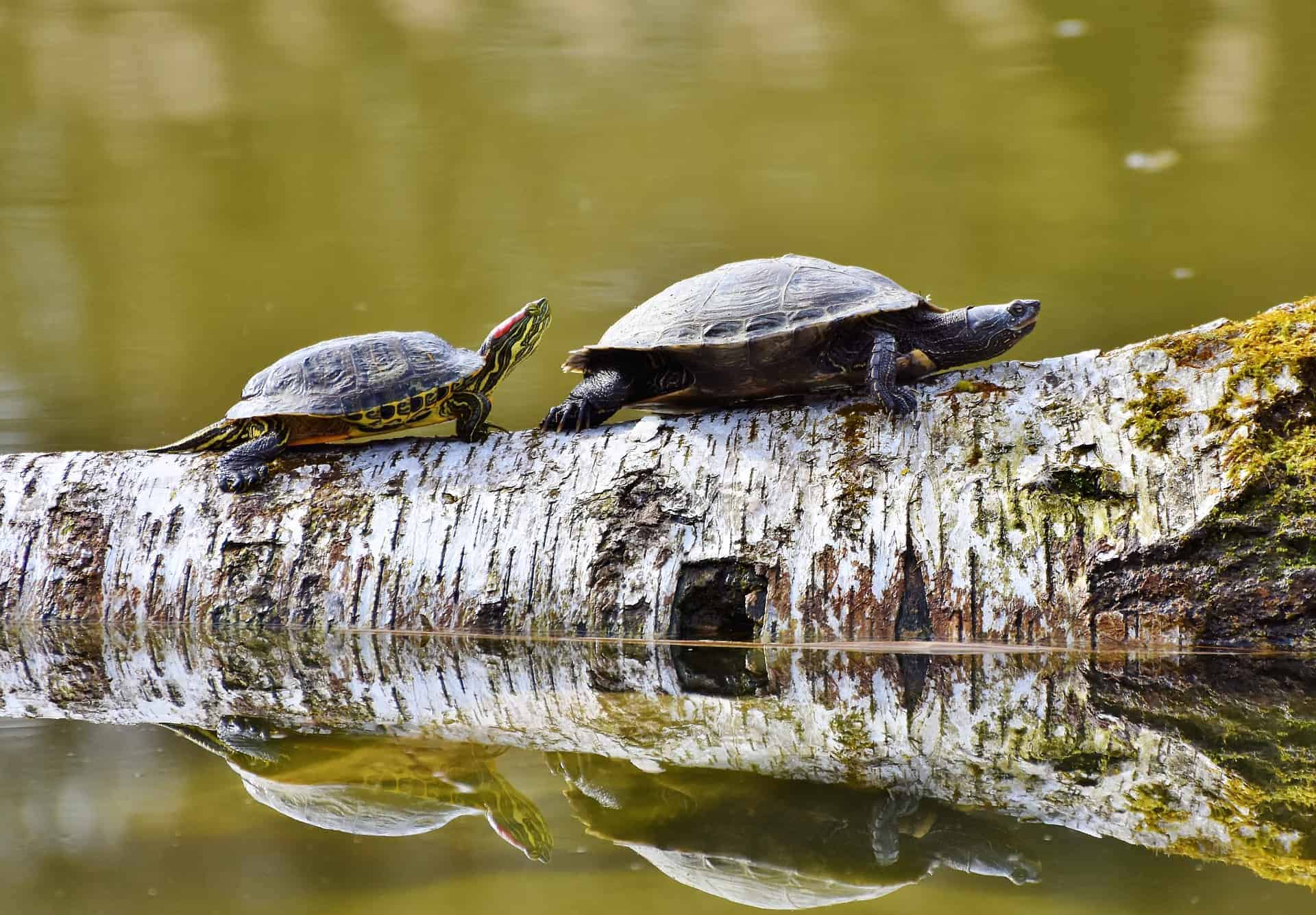
2. Brumation
Brumation is the hibernation-like state of cold-blooded animals like reptiles and amphibians. It is not a sleep state like hibernation, but a dormancy state. Brumation is triggered by the onset of colder temperatures and shorter daylight hours. Animals do not need to fatten up before brumation, even though brumation can last for months. On the contrary, animals stop eating before brumation as they cannot digest a meal during that state. Animals in brumation may wake up to drink water and might shift before returning to sleep.
Brumating Species include:
- Painted Turtles – many turtles dig burrows in the bottom of the pond or lake and remain under water until the beginning of spring
- Northern Leopard Frogs – these frogs spend their winters under the ice of rivers, creeks or ponds. A high concentration of glucose in the vital organs of Leopard Frogs prevents freezing. Once the weather warms and the ice melts, the frog will thaw and its heart and lungs resume normal activities.
3. Torpor
Torpor is a light hibernation which helps some species survive shorter periods of time during harsh winter months or other extreme environmental conditions.
Winter-active animals that undergo torpor include:
- Birds – some birds also undergo nightly torpor (like hummingbirds and chickadees)
- Bears – when black bears prepare for torpor they can gain 30 pounds per week!
- Raccoons and skunks
Animals in torpor also reduce their breathing, heart rates and metabolic rates, but not to the same extremely low levels as animals in hibernation. Pregnant female bears can also wake up from torpor to give birth, then go back to sleep afterwards!
Fun Fact: Polar bears do not hibernate (or go into torpor) and females only build dens to give birth.
The Difference between Hibernation and Torpor
The difference between hibernation and torpor can be confusing to understand and even contested by scientists. Bears are listed here as animals that enter a state of torpor and are not true hibernators. Isn’t it funny that bears are one of the most popular animals children study when learning about hibernation? Scientists don’t always agree on which way bears should be classified.
Regardless, bears can sleep more than 100 days without eating, drinking, or passing waste! Instead, bears are able to literally turn their pee into protein through a urea recycling process. The urea produced by their fat metabolism is broken down and the nitrogen created is used to rebuild protein. This ensures they don’t lose too much muscle mass or organ tissue while inactive.
The Puzzle Heads bear nomenclature puzzle is nonetheless a popular addition to bear and hibernation studies.
Hibernators tend to:
- be smaller animals
- not wake up easily
- sleep for days, weeks or months
- not necessarily eat or drink
- have body temperatures that drop more drastically and are closer to their environmental conditions
- be in danger if they have not fattened up enough before beginning hibernation
A Torpor state:
- can last for shorter periods of time
- means animals don’t need to “fatten up” before entering torpor
- is not necessarily seasonal – some animals can enter a state of torpor at any time of year, even nightly, or when resources are scarce (when food or water is scarce in winter or summer, or during temperature extremes, either hot or cold)
- means animals can wake more easily if threatened or hurt and can go back to sleep
- can be dangerous if the body temperature lowers more than usual, or a cold spell lasts longer than expected
Animals have many remarkable ways to adapt to winter. It’s fun to observe which ones are active around your home or classroom on wintery days. Tracks in the snow are great clues.
What animals do you see active through the winter in your community?
Download the FREE Hibernation Study Sorting Cards to see how well you know which animals Hibernate, Brumate or go into Torpor!
